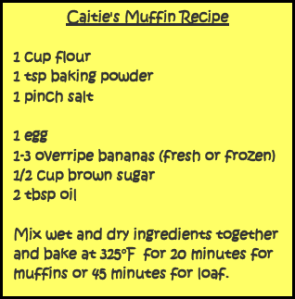Food. Delicious, comforting, nutritious, not-so-nutritious, sweet, savoury, spicy, sticky, crunchy, chewy, bland food. Food can be a source of great pleasure…or, for the parents of a picky eater, agonizing despair.
Ben started life as a 4 lb. 10 oz. preemie, delivered at 33 1/2 weeks. Happily, aside from being teeny, he had none of the challenges one usually expects with babies born that early. He was fed first by nasogastric tube and then a combination of breast and bottle (the debate around which will I’m sure the topic of another post at some point).
We went on to start “solids” (purees) around 6 months and he ate ANYTHING. I was super-adventurous mom – I made my own baby food and mixed spices into everything (cinnamon carrots…curried chicken and broccoli…gingered squash). His favourite foods were kalmata olives, feta cheese, and anything with curry powder. I patted myself on the back and felt superior to all those moms who feed their kids boring purees and set themselves up for a lifetime of catering to their kids’ bland palates.
And then around 18 months, “More! More!” suddenly turned into “MMMMM!!” which is the sound of a toddler with his mouth clamped tighter than the trash compactor on the detention level of the Death Star. As an added bonus, always a bit of a puker (gastroesophageal reflux being one of his remaining preemie traits), Ben discovered the ability to barf on command to demonstrate his disinterest in eating something. Suddenly I had become a mom of a dreaded picky eater.
After I worked through the initial denial, anger, and grief (there is nothing quite like sobbing hysterically at the dinner table while Googling “How do I get my picky toddler to eat?” on your laptop while your 3 year-old screams, “NO!! I don’t LIKE that!! Why are you making me eat that?? I don’t LIKE it!!”), I slowly reached the acceptance stage.
A lot of the websites out there on picky eaters will tell you not to engage in power struggles – you choose what to put in front of your child and he or she chooses how much of it to eat and I wholeheartedly agree that power struggles around food can lead down an unhealthy path. The websites suggest offering a variety of foods, changing utensils, ignoring, removing distractions, using reward charts, etc. None of those tips worked for us and the list of things Ben wouldn’t eat grew: Raw vegetables were too crunchy. Cooked vegetables were too wet. Grapes and blueberries had skins. Ice cream was too cold. (ICE CREAM!! THE KID WOULDN’T EAT ICE CREAM, FOR GOODNESS’ SAKE!) Just about everything else “didn’t swallow very well” (ie. led to puking). And the behaviour at the dinner table (both his and ours) got worse and worse.
Finally we realized that we were dealing with two separate issues at mealtimes: what Ben ate and how he behaved. We decided that while we had no power over what he liked or how much he ate, we did have a responsibility to teach him to act appropriately at the table, and for us that meant no yelling, no arguing, and no declaring that he didn’t like something without trying it first. To deal with the behaviour piece we implemented the “try a bite or you sit out rule.” For time-outs we used Supernanny’s Naughty Step technique: the CALM but firm warning – place in neutral time-out spot for prescribed time period – return to time-out spot – repeat as necessary – apology – hug and kiss predictability of this worked really well for Ben and for us.
To deal with the “what Ben ate” piece, I focused on offering him a variety of foods but making what I knew he would eat as nutritious as possible, which meant making my own fish sticks and chicken fingers breaded in crushed bran or corn flakes, pureeing vegetables like carrots, zucchini, pumpkin or spinach into tomato sauce and serving over whole-wheat pasta, and baking a whole lot of the best ever “blank slate” muffins using my sister-in-law-to-be’s recipe:
These can be customized pretty any way you can think of – replace the banana and/or the oil with applesauce or jarred baby food (sweet potato or carrot work well); add grated or whole fruits or vegetables like carrot, zucchini, or berries; spice it up with vanilla, nutmeg, cinnamon, or cardamom; use whole wheat flour or oat bran for the flour; or boost the nutritional punch with additions like yoghurt, powdered milk, wheat germ, or ground flax – just increase the baking powder to help it rise as you add more “stuff.”
Ben turned 5 in May, and as suddenly as the pickiness started, it stopped – just in time, too, because Molly, who is NOT AT ALL a picky eater had just started to imitate her big brother’s, “I don’t LIKE that!!” just like she imitates everything else he does. Ben will now try most things that I put in front of him with, if not enthusiasm, at least much less argument than previously, and has even been heard in the past few months to say, “Can I try some of that, mommy?” The majority of these taste-tests now elicit a grudging, “Well, don’t LOVE it, but I LIKE it,” and in the words of Abraham “Grampa” Simpson, “Hot diggety-damn, that’s good enough for me!”






